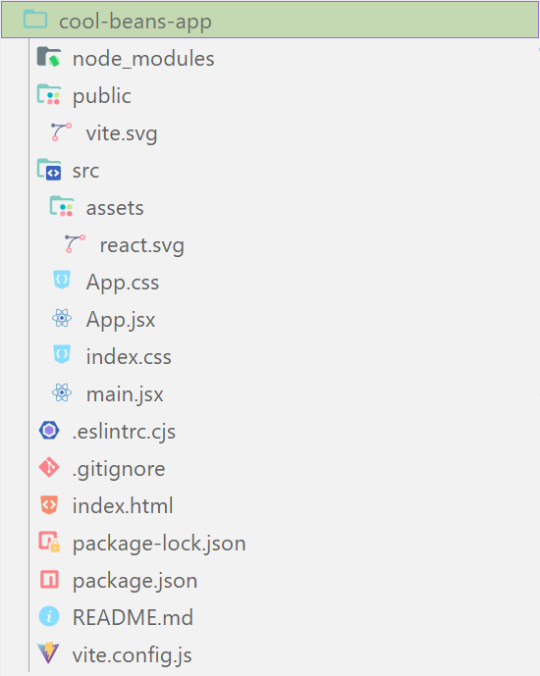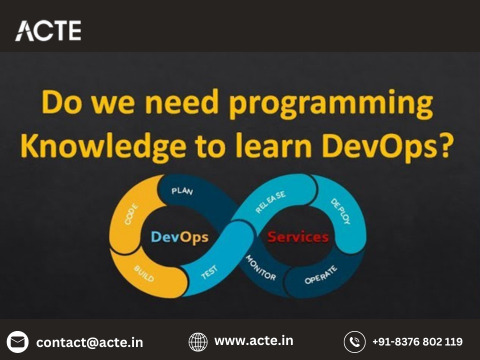#software asset management courses
Explore tagged Tumblr posts
Text
How Can Becoming a Certified Software Asset Manager Boost Your IT Career?
In today’s competitive IT landscape, specialized skills make all the difference. One such high-demand skill is Software Asset Management (SAM). Enrolling in software asset management courses and earning a Certified Software Asset Manager (CSAM) credential can open doors to incredible career opportunities. Let’s explore how achieving a software asset manager certification can give your IT career the boost it deserves! 🚀
🔹 Gain Specialized and In-Demand Skills By completing recognized software asset management courses, you master the art of managing software licenses, compliance, and optimizing IT assets. These skills are highly sought-after by organizations aiming to cut costs and stay compliant.
🔹 Enhance Your Earning Potential The csam certification salary is impressive, with certified professionals often earning higher than their non-certified peers. Companies are willing to pay more for expertise that saves them millions in software compliance and licensing!
🔹 Boost Your Resume with an Industry-Recognized Credential Holding a Certified Software Asset Manager certification like CSAM immediately boosts your profile. Recruiters actively seek candidates with a strong understanding of SAM certification practices.
🔹 Get Global Recognition A certified software asset manager credential is respected worldwide. Whether you aim to work locally or abroad, this certification can set you apart in the global IT job market.
🔹 Be a Compliance Champion Companies face huge penalties for software non-compliance. With a certified software asset manager (CSAM) credential, you can lead organizations in maintaining compliance, making you an irreplaceable asset.
🔹 Affordable Investment for a Bright Future Worried about cost? The sam certificate cost is a small investment compared to the career growth and salary hikes it can bring. Especially in India, the csam certification cost in India is quite affordable, offering great ROI.
🔹 Get Certified from a Trusted Body Looking for a trusted certification authority? Check out the Certified Software Asset Manager (CSAM) Certification from GSDC – a global leader in professional certifications! 🎓
🔹 Open the Door to Leadership Roles With a software asset manager certification, you are equipped to take on senior roles like SAM Manager, IT Asset Manager, and Compliance Officer, making leadership positions much more attainable.
🔹 Future-Proof Your Career With the increasing emphasis on digital governance, demand for SAM professionals will only grow. Future-proof your career with a csam certification and stay ahead of the curve! 🛡️
✅ If you're ready to supercharge your career, don’t wait! Get your Certified Software Asset Manager (CSAM) credential today and step confidently into a brighter future! 👉 Learn more and get certified here!
👉For more inquiries - +41444851189.
#SoftwareAssetManagement #SAMCertification #CSAMCertification #CertifiedSoftwareAssetManager #CareerBoost #ITCareers #SAMCourses #GSDCCertification #SoftwareCompliance #AssetManagement #CSAM #TechCareers #SAMManager #DigitalGovernance #FutureProofYourCareer
#software asset management courses#csam certification salary#sam certification#software asset management certification#software asset manager certification#certified software asset manager#sam certificate cost#csam certification#certified software asset manager (csam)#csam certification cost in india .
0 notes
Note
I've just discovered your Rolan x Tav comic.
It's SO neat and accurate, in matter of deign and details!
In case you don't mind, of course, I have some questions you maybe have answered before:
What software do you work with? What kind of pencils do you use? How do you manage to set so neat and clean results? Do you need many references for that or is just a gift you have? How many years have you been drawing to achieve those results?
I don't mind at all! And I don't believe I've answered any of these questions before, at least not since I started doing my comics.
For software I mainly use Clip Studio, though I do also use PaintTool Sai (v2) for certain things that I feel it does better. All of my Mass Effect comics are lined in Sai, for example because things like armour have a lot more inorganic shapes and require long, sweeping, unbroken lines, and I like the pen stabilization in Sai far better than CSP's for that sort of thing.
For how long I've been doing art, I've been at it basically nonstop since I was 9 (so 20 years now, jeez). I was in an art program throughout highschool, went to college for art/animation for 4 years, and I'll have been working professionally as an animator for 8 years in May! So there's a lot of practice there for sure.
And yeah, I use a ton of references. Usually a good chunk of the time I'll spend on something is just collecting or making the reference material I need for it.
I'm putting the rest under a read more because it's pretty long:
(Tumblr keeps eating my formatting so sorry if this is a little scuffed)
Because I'm normally working full time and doing this stuff in my free time after hours and on weekends, if I know I'm going to be drawing something a *lot*, I'll usually put together some kind of reference for myself in 3D so I can take some of the brainwork out of it and get more out of my evenings even when I'm feeling fried. It also means I put as little extra strain on my wrist as possible because I injured it a number of years back and it gets angry at me if I go for too many hours in a day.
But to give you an example, for Ember I have a Sculpt of her head that I can use to reference any angle I want, or to draw directly over top of for tricky angles. How I draw her isn't quite 1:1 to the model, but it gives me a base structure and landmarks I can build on top of.

My basic workflow is to take the angle I want, draw over it using the model as a guide (while picking and choosing where to stay true to it and where to say fuck it and do what I want), then I get rid of the 3D and do another pass, tweaking and redrawing anything I'm not totally happy until I'm satisfied with how it looks. I draw Ember with a slightly softer, more rounded face than the model has, for instance. Just because something looks right in 3D doesn't always mean it looks right once translated to 2D and I don't care if something is technically "correct" if it doesn't feel right or isn't conveying what I want it to properly.




I'm also always checking reference screenshots to make sure I'm in the right ballpark of how something should look. I actually have a wall of photos next to my desk and while I didn't put them up for that purpose, it has come in surprisingly handy for quickly checking face or hair details when needed. I also just have a big folder of screenshots and other saved reference material.

I don't have a problem noooo~ 😅
Additionally, if my art has a background these days, there is a 100% chance that's a 3D set I built in Blender because I hate drawing backgrounds, but I do like building them in 3D.
Here's two examples: the area around Astarion's bed, which I built out of some of the in-game assets like a lego set (this was a pain in the ass, it probably would have been faster to just build it from scratch based on screenshots 😩) and a closet I modelled for something that's still a WIP.


I'll get the angle I want, have Blender generate some linework from it and then grab a basic render of it to slap into CSP so I can draw the characters over top of it.
And as for brushes: the main brush I use in CSP is just the default 'Real G-Pen', with opacity effects turned off and these pressure settings: (I like to keep it simple, and I have a bit of a heavy hand so the altered pen pressure just helps me get a smoother taper). I change up the stabilizer settings depending on what I'm doing. Lower for things that need short, quick lines like hair and higher for most other things.

For Sai, I use a 9B pencil I found a number of years ago on Deviantart (I think?) and I wish I could link you to the original post I got the settings from, but Deviantart's search is... bad and I'm unable to find it again.

I hope that answered all your questions! If not, feel free to ask more!
78 notes
·
View notes
Note
[Addie's smile turned sympathetic, their tail resuming its calm sway.]
They don't bother me at all! I… Actually think they're really cute. They look... cuddly.
[Addie glanced away bashfully, but the mention of Kinito made them jolt to attention.]
O-oh my scales, I hadn't even thought about what he would have been going through, I should go and-!
[Before they could finish that thought, they paused. All things considered, they… Were probably the second to last person he'd want to see right now… (the first being Sonny, of course) Still, they had a burning drive to at least see how he was doing...]
…g-give him some space. He's… Probably not in the mood to deal with me right now…
A-ah… Owl, too… I wonder if they were together when it happened… I really hope so.
[Perhaps… They could just peek in on their cams and not say anything…? But, argh, that just feels like a breach of privacy. That sure sounded like a great thing to do after destroying their trust…]
[It was then that they remembered having seen a message appear earlier, and they rushed to prop themselves up and hurriedly scan its contents.
S-sorry about that, Sec! I only just saw what you sent… But, I'll do that for sure! I'll be updating them on everything!
[Addie hesitated a bit, after that. They knew that Sec wasn't ever too fond of the takeover plan… And so, they appended with a twinge of guilt:]
How are you holding up, by the way…? U-um, I'm not sure how much of everything you saw, so…
-Addie
"A-Ah... You... Yes, You are probably correct... I am... Rather spent myself.. I cannot even imagine how-"
[He shut his mouth, fingers rhythmically tapping at his side. It was perhaps one of the more common nervous ticks he had...]
"I... I need to make this up to him... I.. I am sure he will see how much better this arrangement will be... He never even liked all the management stuff, He most likely just wanted the assets to make things for his... users."
[One of those knew aquatic arms went behind his neck, scratching at the hair that was standing up behind it. It seems he was already beginning to absentmindedly use them... So natural yet so foreign.]
"I-I'm sure I can grant access to some of that again... I-I would just need to make sure he doesn't overload things, And.. this should happen after I do all the repairs... Christ, the little fella hasn't updated these software drivers in years.."
[It definitely seems Sonny is feeling a tad better, seeing as though he has lost himself to rambling like this.]
"And I have... Another idea to make things up to him but... I have no idea where I would start..." [A finger grazes his mouth absentmindedly]
"Jade didn't want her files touched, But Sam..."
[He rambled to himself the entire time Addie typed their response to Sec.]
7 notes
·
View notes
Note
Tips on becoming a freelance portfolio/ investment manager for private wealthy clients.
I’ve got a bit of experience as an assistant Portfolio manager, and I’ve been looking into starting my own business working with private wealthy individuals client.
There's so much to this, this is the shortest I could keep my answer:
Build Your Foundation:
Hone Your Skills: Sharpen your investment analysis, portfolio construction, and risk management knowledge as much as you can. Maybe consider courses or certifications to fill any gaps and boost your credibility more.
Define Your Niche: Are you drawn to specific asset classes (tech stocks, real estate, etc.) or client types (retirees, entrepreneurs)? Specializing adds value. This will boost referrals.
Get Regulatory Clarity: Depending on your location, there might be licensing or registration requirements for freelance advisors. Do your homework to stay compliant and track any changes.
Marketing and Client Acquisition:
Build Online Credibility: A polished LinkedIn profile and a basic website showcasing your expertise and background are essential. Network strategically!
Content is King: Share insightful market commentary through blog posts or a newsletter. You can try all the other social platforms as well. This establishes you as a thought leader and attracts potential clients.
Target the Right Audience: Where do your ideal clients hang out (online and offline)? Charity events, industry conferences, upscale networking groups – be where they are.
Leverage Your Existing Network: Don't underestimate the power of your current contacts. Let clients, colleagues, and friends know about your new venture(optional).
Operational:
Pricing Model: Will you charge hourly, flat fees, or a percentage of assets under management? Consider your services and market rates.
Tech Tools: Invest in the right software for portfolio management, reporting, and client communication to streamline your workflow.
Contracts and Compliance: Have a lawyer draft airtight client agreements that protect you both.
Bonus Tips:
Get a Mentor: Connect with a seasoned advisor who can offer guidance and share their experience.
Start Small and Scale: Begin with a few strategic clients, and as your expertise and reputation grow, expand your clientele.
Embrace the Freelance Mindset: Be prepared for the hustle; managing your own business requires discipline and adaptability.
Remember, building a successful freelance practice takes time, dedication, and top-notch client service. Stay passionate, stay focused, and let your expertise pave the way to becoming a trusted advisor for your wealthy clientele.
16 notes
·
View notes
Text
Mini React.js Tips #2 | Resources ✨

Continuing the #mini react tips series, it's time to understand what is going on with the folders and files in the default React project - they can be a bit confusing as to what folder/file does what~!
What you'll need:
know how to create a React project >> click
already taken a look around the files and folders themselves

What does the file structure look like?


✤ node_modules folder: contains all the dependencies and packages (tools, resources, code, or software libraries created by others) needed for your project to run properly! These dependencies are usually managed by a package manager, such as npm (Node Package Manager)!
✤ public folder: Holds static assets (files that don't change dynamically and remain fixed) that don't require any special processing before using them! These assets are things like images, icons, or files that can be used directly without going through any additional steps.

✤ src folder: This is where your main source code resides. 'src' is short for source.
✤ assets folder: This folder stores static assets such as images, logos, and similar files. This folder is handy for organizing and accessing these non-changing elements in your project.
✤ App.css: This file contains styles specific to the App component (we will learn what 'components' are in React in the next tips post~!).
✤ App.jsx: This is the main component of your React application. It's where you define the structure and behavior of your app. The .jsx extension means the file uses a mixture of both HTML and JavaScript - open the file and see for yourself~!
✤ index.css: This file contains global styles that apply to the entire project. Any styles defined in this file will be applied universally across different parts of your project, providing a consistent look and feel.
✤ main.jsx: This is the entry point of your application! In this file, the React app is rendered, meaning it's the starting point where the React components are translated into the actual HTML elements displayed in the browser. Would recommend not to delete as a beginner!!

✤ .eslintrc.cjs: This file is the ESLint configuration. ESLint (one of the dependencies installed) is a tool that helps maintain coding standards and identifies common errors in your code. This configuration file contains rules and settings that define how ESLint should analyze and check your code.
✤ .gitignore: This file specifies which files and folders should be ignored by Git when version-controlling your project. It helps to avoid committing unnecessary files. The node_modules folder is typically ignored.
✤ index.html: This is the main HTML file that serves as the entry point for your React application. It includes the necessary scripts and links to load your app.
✤ package.json: A metadata file for your project. It includes essential information about the project, such as its name, version, description, and configuration details. Also, it holds a list of dependencies needed for the project to run - when someone else has the project on their local machine and wants to set it up, they can use the information in the file to install all the listed dependencies via npm install.
✤ package-lock.json: This file's purpose is to lock down and record the exact versions of each installed dependency/package in your project. This ensures consistency across different environments when other developers or systems install the dependencies.
✤ README.md: This file typically contains information about your project, including how to set it up, use it, and any other relevant details.
✤ vite.config.js: This file contains the configuration settings for Vite, the build tool used for this React project. It may include options for development and production builds, plugins, and other build-related configurations.

Congratulations! You know what the default folders and files do! Have a play around and familiarise yourself with them~!
BroCode’s 'React Full Course for Free’ 2024 >> click
React Official Website >> click
React's JSX >> click
The basics of Package.json >> click
Previous Tip: Tip #1 Creating The Default React Project >> click
Stay tuned for the other posts I will make on this series #mini react tips~!
#mini react tips#my resources#resources#codeblr#coding#progblr#programming#studyblr#studying#javascript#react.js#reactjs#coding tips#coding resources
25 notes
·
View notes
Text

From La Stampa (translated from Italian):
“Make Finance Great Again,” Trump family makes its own cryptocurrency and allies with Silicon Valley It will be called “World Liberty Financial,” will have tech investors and real estate developers from Chase Herro and Zak Folkman to Steve Witkoff inside. Sons Eric and Donald Jr. will coordinate. And his backer Tyler Winklevoss jokes, “Donald has been orange-pilled, indoctrinated.” Jacopo Iacoboni Sept. 17, 2024 Updated 11:00 a.m. 3 minutes of reading
They want to do a kind of “make finance great again,” along the lines of MAGA, the election slogan and the Make America Great Again campaign. Donald Trump's sons, Don Jr. and Eric, of course with their father's imprimatur, are about to launch a new cryptocurrency platform that will be called “World Liberty Financial,” and will allow users to make even massive transactions without a bank getting in the way and extracting fees (and with a very low level of tax tracking, it should be added). A couple of concepts familiar to bitcoin fans, for example, but which the Trump family now has ambitions to decline on a large scale. It is not certain that this marriage between Trumpism and decentralized finance, DeFi, is a harbinger of only positive developments. The board of “World Liberty Financial” will also consist of former crypto investors such as Chase Herro and Zak Folkman, and Steve Witkoff, a real estate developer and old friend of Trump. But thanks to documents filed with the U.S. Federal Election Commission that we have been able to read we know that in general the entire Trump campaign - Make America Great Again Inc. - received money not only from Musk, but cryptocurrency from billionaire twins Cameron and Tyler Winklevoss, who lead the cryptocurrency company Gemini: about $3.5 million in Bitcoin on July 19, the day after Trump's speech at the Milwaukee convention. The Winkelvosses also poured in money to America PAC, the tech investor-backed group that Musk helped launch in 2024 (Trump had bragged that Musk was giving him $45 million a month; Musk said his contribution is “at a much lower level”). Another co-founder of a cryptocurrency exchange, Jesse Powell, boss of Kraken, and venture capitalists Marc Andreessen and Ben Horowitz (who created a16z) who have invested billions of dollars in cryptocurrency startups, have also made endorsements and poured money into Trump. In short, for the Trump family to embark on this big cryptocurrency project is a natural consequence of the fact that these are almost becoming a Republican asset in the campaign, and the “libertarian” wing of the old Gop is now a kind of very, very rampant ideologized “cyberlibertarianism.” The real boss of the “tech bros” according to many is not Elon Musk, but Peter Thiel. Zuckerberg's longtime partner in Facebook, co-founder of PayPal, Thiel's fortune has at least doubled during the Trump presidency. Palantir-a much-discussed software company variously accused of extracting data from Americans and profiling them-has managed to get a contract from the Pentagon. Other donors to MAGA Inc include Jacob Halberg, Palantir's princely analyst, and Trish Duggan, a wealthy Scientology funder and friend of the tech bros. Trump's vice presidential candidate, J. D. Vance, traveled to Silicon Valley and the Bay Area, celebrating a dinner at the home of BitGo CEO Mike Belshe, 100 people each pouring in between $3,300 a plate and a $25,000 roundtable. Trump in 2021 called bitcoin a “fraud against the dollar.” A few weeks ago, speaking in Nashvill at the bitcoin fan conference, he promised, “The United States will become the crypto capital of the planet.” Better than his friend Putin's Russia, although this Trump did not say so explicitly. The fact is that after his speech, Tyler Winklevoss ran on X (now the realm of cyberlibertarians) and joked that Donald had been “orange-pilled,” making a Matrix analogy, had been “indoctrinated,” or had finally seen the real reality behind the appearances.
4 notes
·
View notes
Photo

Boost Your Agency’s Success with These Simple Strategies
Every small professional service agency owner wants to thrive, but chaos can lurk around every corner. Here’s how to navigate smoothly!
1. Claim Your Niche
Identify what sets you apart from others in the market. Are you the wizard of _______? Your unique niche can be your greatest asset.
Once pinpointed, focus your marketing efforts on that niche. A well-crafted message can attract the right clients faster than a clickbait cat video!
2. Build Strong Relationships
Networking isn’t just a buzzword; it’s a business lifeline. Attend events and don’t forget to follow up! People love to feel remembered.
Consider creating a referral program. Everyone likes a good deal—incentivizing referrals can turn your current clients into our best salespeople.
3. Streamline Your Processes
Evaluate your internal workflows. Are you drowning in paperwork? Use tools like project management software to simplify and automate where possible.
Regularly review your processes to identify bottlenecks. A leaner operation saves time, money, and a few gray hairs along the way!
4. Embrace Continuous Learning
The professional landscape is constantly changing. Invest in online courses or workshops relevant to your field. Knowledge is power—especially when it can help you serve clients better.
Encourage your team to share what they learn. A culture of learning fosters innovation and boosts morale!
5. Leverage Social Proof
Showcase client testimonials and case studies on your website. Prospective clients trust the opinions of others like their favorite barista!
Maintain an active presence on social media platforms where your audience hangs out. Share success stories, behind-the-scenes content, and engage with followers to build a community.
Conclusion and call to action.
Embrace these strategies to steer your professional service agency toward greater success. Start small, pick one point to implement this week, and watch the impact unfold. I’d love to hear your stories or any additional tips you might have—let’s keep the conversation going!
#artificial intelligence#automation#machine learning#business#digital marketing#professional services#marketing#web design#web development#social media#tech#Technology
4 notes
·
View notes
Text
Which is better full stack development or testing?

Full Stack Development vs Software Testing: Which Career Path is Right for You?
In today’s rapidly evolving IT industry, choosing the right career path can be challenging. Two popular options are Full Stack Development and Software Testing. Both of these fields offer unique opportunities and cater to different skill sets, making it essential to assess which one aligns better with your interests, goals, and long-term career aspirations.
At FirstBit Solutions, we take pride in offering a premium quality of teaching, with expert-led courses designed to provide real-world skills. Our goal is to help you know, no matter which path you choose. Whether you’re interested in development or testing, our 100% unlimited placement call guarantee ensures ample job opportunities. In this answer, we’ll explore both career paths to help you make an informed decision.
Understanding Full Stack Development
What is Full Stack Development?
Full Stack Development involves working on both the front-end (client-side) and back-end (server-side) of web applications. Full stack developers handle everything from designing the user interface (UI) to managing databases and server logic. They are versatile professionals who can oversee a project from start to finish.
Key Skills Required for Full Stack Development
To become a full stack developer, you need a diverse set of skills, including:
Front-End Technologies: HTML, CSS, and JavaScript are the fundamental building blocks of web development. Additionally, proficiency in front-end frameworks like React, Angular, or Vue.js is crucial for creating dynamic and responsive web interfaces.
Back-End Technologies: Understanding back-end programming languages like Node.js, Python, Ruby, Java, or PHP is essential for server-side development. Additionally, knowledge of frameworks like Express.js, Django, or Spring can help streamline development processes.
Databases: Full stack developers must know how to work with both SQL (e.g., MySQL, PostgreSQL) and NoSQL (e.g., MongoDB) databases.
Version Control and Collaboration: Proficiency in tools like Git, GitHub, and agile methodologies is important for working in a collaborative environment.
Job Opportunities in Full Stack Development
Full stack developers are in high demand due to their versatility. Companies often prefer professionals who can handle both front-end and back-end tasks, making them valuable assets in any development team. Full stack developers can work in:
Web Development
Mobile App Development
Enterprise Solutions
Startup Ecosystems
The flexibility to work on multiple layers of development opens doors to various career opportunities. Moreover, the continuous rise of startups and digital transformation initiatives has further fueled the demand for full stack developers.
Benefits of Choosing Full Stack Development
High Demand: The need for full stack developers is constantly increasing across industries, making it a lucrative career choice.
Versatility: You can switch between front-end and back-end tasks, giving you a holistic understanding of how applications work.
Creativity: If you enjoy creating visually appealing interfaces while also solving complex back-end problems, full stack development allows you to engage both creative and logical thinking.
Salary: Full stack developers typically enjoy competitive salaries due to their wide skill set and ability to handle various tasks.
Understanding Software Testing
What is Software Testing?
Software Testing is the process of evaluating and verifying that a software product or application is free of defects, meets specified requirements, and functions as expected. Testers ensure the quality and reliability of software by conducting both manual and automated tests.
Key Skills Required for Software Testing
To succeed in software testing, you need to develop the following skills:
Manual Testing: Knowledge of testing techniques, understanding different testing types (unit, integration, system, UAT, etc.), and the ability to write test cases are fundamental for manual testing.
Automated Testing: Proficiency in tools like Selenium, JUnit, TestNG, or Cucumber is essential for automating repetitive test scenarios and improving efficiency.
Attention to Detail: Testers must have a keen eye for identifying potential issues, bugs, and vulnerabilities in software systems.
Scripting Knowledge: Basic programming skills in languages like Java, Python, or JavaScript are necessary to write and maintain test scripts for automated testing.
Job Opportunities in Software Testing
As the demand for high-quality software increases, so does the need for skilled software testers. Companies are investing heavily in testing to ensure that their products perform optimally in the competitive market. Software testers can work in:
Manual Testing
Automated Testing
Quality Assurance (QA) Engineering
Test Automation Development
With the rise of Agile and DevOps methodologies, the role of testers has become even more critical. Continuous integration and continuous delivery (CI/CD) pipelines rely on automated testing to deliver reliable software faster.
Benefits of Choosing Software Testing
Job Security: With software quality being paramount, skilled testers are in high demand, and the need for testing professionals will only continue to grow.
Quality Assurance: If you have a knack for perfection and enjoy ensuring that software works flawlessly, testing could be a satisfying career.
Automated Testing Growth: The shift toward automation opens up new opportunities for testers to specialize in test automation tools and frameworks, which are essential for faster releases.
Flexibility: Testing provides opportunities to work across different domains and industries, as almost every software product requires thorough testing.
Full Stack Development vs Software Testing: A Comparative Analysis
Let’s break down the major factors that could influence your decision:
Factors
Full Stack Development
Software Testing
Skills
Proficiency in front-end and back-end technologies, databases
Manual and automated testing, attention to detail, scripting
Creativity
High – involves creating and designing both UI and logic
Moderate – focuses on improving software through testing and validation
Job Roles
Web Developer, Full Stack Engineer, Mobile App Developer
QA Engineer, Test Automation Engineer, Software Tester
Career Growth
Opportunities to transition into senior roles like CTO or Solution Architect
Growth towards roles in automation and quality management
Salary
Competitive with wide-ranging opportunities
Competitive, with automation testers in higher demand
Demand
High demand due to increasing digitalization and web-based applications
Consistently high, especially in Agile/DevOps environments
Learning Curve
Steep – requires mastering multiple languages and technologies
Moderate – requires a focus on testing tools, techniques, and automation
Why Choose FirstBit Solutions for Full Stack Development or Software Testing?
At FirstBit Solutions, we provide comprehensive training in both full stack development and software testing. Our experienced faculty ensures that you gain hands-on experience and practical knowledge in the field of your choice. Our 100% unlimited placement call guarantee ensures that you have ample opportunities to land your dream job, no matter which course you pursue. Here’s why FirstBit is your ideal training partner:
Expert Trainers: Learn from industry veterans with years of experience in development and testing.
Real-World Projects: Work on real-world projects that simulate industry scenarios, providing you with the practical experience needed to excel.
Job Assistance: Our robust placement support ensures you have access to job openings with top companies.
Flexible Learning: Choose from online and offline batch options to fit your schedule.
Conclusion: Which Career Path is Right for You?
Ultimately, the choice between full stack development and software testing comes down to your personal interests, skills, and career aspirations. If you’re someone who enjoys building applications from the ground up, full stack development might be the perfect fit for you. On the other hand, if you take satisfaction in ensuring that software is of the highest quality, software testing could be your calling.
At FirstBit Solutions, we provide top-notch training in both fields, allowing you to pursue your passion and build a successful career in the IT industry. With our industry-aligned curriculum, expert guidance, and 100% placement call guarantee, your future is in good hands.
So, what are you waiting for? Choose the course that excites you and start your journey toward a rewarding career today!
#education#programming#tech#technology#training#python#full stack developer#software testing#itservices#java#.net#.net developers#datascience
2 notes
·
View notes
Text
Mastering Java: Your Comprehensive Guide to Programming Excellence
Embarking on the journey of mastering Java is akin to entering a realm of endless possibilities. Java, a versatile and widely-utilized programming language, offers a broad spectrum of applications, from crafting web and mobile applications to powering robust enterprise systems. Whether you are a novice in the realm of coding or a seasoned programmer looking to broaden your skill set, the path to proficiency in Java is an exciting one.

In this comprehensive guide, we will be your guiding light through the intricacies of Java, starting from the foundational basics and progressing to the more advanced aspects of the language. Our objective is to equip you with the knowledge and skills that form a robust and unshakable foundation for your journey into the vibrant world of Java. Fasten your seatbelt as we embark on this exhilarating exploration, charting a course that will empower you to thrive in the ever-evolving landscape of software development.
Here's a 8-step guide to effectively learn Java
Step 1: Setting Up Your Development Environment
Your journey to becoming a proficient Java developer commences with setting up your development environment. The essential components are the Java Development Kit (JDK) and an Integrated Development Environment (IDE) like Eclipse or IntelliJ IDEA. These tools aren't just convenient; they're the gears that will drive your Java programming endeavors. They streamline the coding process, provide useful features, and offer an organized workspace, making your coding experience efficient and enjoyable.
Step 2: The Foundation - Learning the Basics
With your development environment ready, it's time to delve into the fundamental building blocks of Java. Begin by acquainting yourself with data types, variables, operators, and control structures. These are the nuts and bolts of the language, and a solid grasp of these concepts is essential. You'll find an abundance of online tutorials and beginner-friendly Java books to assist you at this stage.
Step 3: Navigating the World of Object-Oriented Programming (OOP)
The object-oriented programming (OOP) approach is well known in Java. To harness the true power of Java, immerse yourself in the world of OOP. Understand the concepts of classes, objects, inheritance, encapsulation, and polymorphism. This knowledge forms the bedrock of Java programming and enables you to design efficient, organized, and scalable code.
Step 4: Mastering Data Structures and Algorithms
Data structures (such as arrays, lists, and sets) and algorithms are the secret sauce behind solving real-world problems efficiently. As you progress, dive into the world of data structures and algorithms. These are the tools that will empower you to handle complex tasks and optimize your code. They're your go-to assets for creating efficient and responsive applications.
Step 5: The Art of Exception Handling
Java boasts a robust exception-handling mechanism. Understanding how to handle exceptions properly is not just an add-on skill; it's a vital aspect of writing reliable code. Exception handling ensures that your code gracefully manages unexpected situations, preventing crashes and delivering a seamless user experience.
Step 6: Exploring Input and Output Operations
In this step, you'll explore the realm of input and output (I/O) operations. Mastering I/O is crucial for reading and writing files, as well as interacting with users. You'll gain the ability to build applications that can efficiently process data and communicate effectively with users.
Step 7: Conquering Multi tasking
Java's support for multi tasking is a significant advantage. Understanding how to manage threads and synchronize their actions is vital for creating concurrent applications. Multithreading is the key to developing software that can handle multiple tasks simultaneously, making your applications responsive and scalable.
Step 8: Building Projects and Real-World Practice
Theory is only as valuable as its practical application. The final step involves applying what you've learned by building small projects. These projects serve as a proving ground for your skills and provide valuable additions to your portfolio. Whether it's a simple application or a more complex project, the act of building is where the real learning takes place.

As you step into this vibrant realm of Java, remember that continuous learning is the key to staying relevant and effective in the ever-evolving field of software development. Be open to exploring diverse applications, from web development to mobile apps and enterprise solutions, and never underestimate the power of hands-on practice. Building projects, no matter how small, will solidify your knowledge and boost your confidence.
In your quest to master Java, ACTE Technologies stands as a valuable ally. Their expert guidance and comprehensive training programs will sharpen your skills, boost your confidence, and pave the way for a rewarding career in software development. Whether you're embarking on your Java journey or looking to take your skills to the next level, ACTE Technologies offers the resources and support you need to thrive in the world of Java programming.
So, with Java as your trusty companion, and ACTE Technologies as your guide, the possibilities are boundless. Your journey is just beginning, and the world of software development awaits your innovation and expertise. Best of luck on your path to mastering Java!
9 notes
·
View notes
Text
What are the key benefits of the CSAM certification in driving IT performance and cost savings?
The Certified Software Asset Manager certification plays a crucial role in optimizing IT operations and delivering significant cost savings for organizations. If you're exploring software asset management courses, understanding the value of the CSAM certification is essential. Below are the key benefits that make this certification a smart investment for IT professionals and organizations alike.
1. Optimized IT Asset Utilization
Certified professionals learn to identify underused or redundant software assets, reducing unnecessary purchases and improving overall asset utilization.
🔍 A software asset manager certification empowers you to streamline software usage across departments, ensuring efficient performance.
2. Substantial Cost Savings
The CSAM program equips professionals with the tools to manage licensing, avoid penalties, and negotiate better vendor contracts.
💰 According to industry trends, individuals with Certified Software Asset Manager certification salary packages often reflect the value they add in reducing software-related expenses.
3. Improved Compliance & Risk Management
Avoiding software audits and non-compliance penalties is a major benefit. CSAM-certified professionals ensure licensing terms are met consistently.
✅ With SAM certification, organizations gain peace of mind and a robust compliance framework.
4. Strategic Decision-Making with Data
CSAM helps professionals analyze usage data, providing actionable insights to guide future software investments and retirements.
📊 Enroll in a software asset management certification to make data-driven software procurement decisions.
5. Enhanced Career Opportunities
Having a certified software asset manager (CSAM) title on your resume opens up roles such as IT Asset Manager, Software License Analyst, and more.
📈 The CSAM certification salary is notably higher compared to peers without certification.
6. Global Recognition and Credibility
The CSAM certification is recognized worldwide, helping you stand out in a competitive job market.
🌍 Whether you're in India or abroad, the CSAM certification cost in India is a worthy investment for long-term career growth.
7. Efficient Vendor and Contract Management
Gain skills to manage vendor contracts, understand software lifecycles, and avoid auto-renewals that could drain your IT budget.
📑 This SAM certificate cost is negligible when compared to the savings and value it drives.
🎯 Ready to become a Certified Software Asset Manager?
Enroll now: 👉 https://www.gsdcouncil.org/certified-software-asset-manager
For more inquiries - +41444851189.
#CSAMCertification #SoftwareAssetManager #SoftwareAssetManagementCourses #SAMCertification #ITCostSavings #ITAssetManagement #CertifiedSoftwareAssetManager #CSAMSalary #SAMCertificate #CSAMCertificationCostInIndia #ITOptimization #TechCareers #ITGovernance #GSDC Certifications.
#software asset management courses#csam certification salary#sam certification#software asset management certification#software asset manager certification#certified software asset manager#sam certificate cost#csam certification#certified software asset manager (csam)#csam certification cost in india .
0 notes
Text

My mental decline, as illustrated in Perforce. Fuck Perforce wHY IS PERFORCE INDUSTRY STANDARD???
For those who don’t know: Perforce or p4v is an application that allows people to check out files from a drive remotely and work on it from another drive so that multiple people can work on different aspects of one big project at the same time from different locations. Like submitting files to a shared folder in Google Drive, but without Google as the middle man. Of course, shit don’t always work right.
Above is my revision history of my project that has to be submitted after my Unreal Engine (game engine) files didn’t save right and fucking disappeared. Thankfully, my un-converted Autodesk Maya (3D modeling software) modkit (set of assets to build a level in a game engine) file was still there but holy shit if that didn’t save my work I was going to jump off a bridge.
3 notes
·
View notes
Text
Digital Product Ideas & Strategies for Online Success
Digital Product Ideas + How to Sell Them Online, Why Create Digital Products? How to Come Up with Product Ideas?
In today's digital age, creating and selling digital products has become a lucrative venture for many entrepreneurs and creators. From ebooks to online courses, there are endless possibilities when it comes to digital product ideas. Not only are digital products cost-effective to produce, but they also provide a passive income stream once they are created and marketed effectively. In this article, we will explore 24+ digital product ideas sorted by type, discuss how to sell them online, delve into the reasons for creating digital products, and provide tips on how to come up with product ideas.
Ebooks
1. Recipe ebooks featuring unique and healthy dishes.
2. How-to guides on various DIY projects.
3. Self-help ebooks focusing on personal development and motivation.
4. Travel guides for specific destinations or travel hacks.
Online Courses
5. Language learning courses for beginners.
6. Photography masterclasses for aspiring photographers.
7. Social media marketing courses for small business owners.
8. Fitness and nutrition programs for different fitness levels.
Templates and Printables
9. Budgeting templates for financial planning.
10. Social media post templates for content creators.
11. Printable planners and organizers for productivity.
12. Resume templates for jobseekers.
Graphic Design Assets
13. Customizable logo templates for startups and small businesses.
14. Stock photos and illustrations for bloggers and website owners.
15. Infographic templates for data visualization.
16. Social media graphics for Instagram and Facebook posts.
Software and Apps
17. Productivity apps for task management and time tracking.
18. Photo editing software for amateur photographers.
19. Mobile games for entertainment and relaxation.
20. E-commerce platforms for online sellers.
Audio and Video Content
21. Podcast episodes on niche topics.
22. Meditation and relaxation audio tracks.
23. Workout videos for home fitness enthusiasts.
24. Voice-over services for video creators.
Selling digital products online can be done through various platforms such as e-commerce websites, digital marketplaces, or through your own website. Utilize social media and email marketing to promote your products and reach a wider audience. Offer discounts and promotions to attract new customers and retain existing ones. Collaborate with influencers or affiliates to expand your reach and drive more sales.
Creating digital products offers numerous benefits, including scalability, flexibility, and the potential for passive income. Unlike physical products, digital products can be created once and sold multiple times without the need for inventory or shipping costs. Additionally, digital products can reach a global audience, allowing creators to tap into international markets and grow their brand presence.
Coming up with digital product ideas can be challenging, but conducting market research, identifying your target audience, and understanding their needs and preferences can help you brainstorm innovative and valuable products. Stay updated on industry trends and consumer behavior to stay ahead of the competition and meet market demands effectively.
In conclusion, digital products present a lucrative opportunity for creators and entrepreneurs to monetize their skills and knowledge. By exploring diverse digital product ideas, implementing effective marketing strategies, and continuously innovating, you can build a successful digital product business and generate sustainable income in the digital landscape.
4 notes
·
View notes
Text
Navigating the DevOps Landscape: The Power of Code in Operations
In the intricate world of DevOps, the ability to code is not merely an asset; it's the driving force behind a successful career at the crossroads of Development and Operations. Let's explore why programming is not just beneficial but an absolute prerequisite for those charting their course in the transformative realm of DevOps.

1. Automation: Catalyst for Efficiency At the core of DevOps lies the transformative influence of automation. Proficiency in programming empowers DevOps professionals to script automated workflows, ushering in efficiencies that transcend traditional boundaries. Whether it's configuring systems or deploying applications, automation reduces errors and expedites the software delivery lifecycle.
2. Infrastructure as Code (IaC): Shaping Environments with Precision A foundational aspect of DevOps, Infrastructure as Code (IaC) demands coding prowess. Tools like Terraform and Ansible rely on programming skills to define and manage infrastructure through code. This approach not only enhances operational fluidity but also ensures uniformity across diverse environments.
3. Configuration Management: Synchronizing Systems Seamlessly In the DevOps arena, maintaining consistent configurations is paramount. Programming skills are pivotal in crafting scripts for tools like Puppet, Chef, or Ansible, orchestrating the synchronization of configurations across various environments. This uniformity is essential for reliable and scalable operations.
4. CI/CD Pipelines: Orchestrating Flawless Workflows Synonymous with DevOps, Continuous Integration and Continuous Deployment (CI/CD) thrive on programming acumen. Configuring and customizing CI/CD tools such as Jenkins or GitLab CI becomes a streamlined process with coding proficiency. Automation of testing and deployment processes ensures a flawless and dependable delivery pipeline.

5. Scripting for Task Automation: Elevating Routine Operations Programming extends beyond grand automation; it's about refining daily operations. DevOps professionals leverage scripting skills to automate routine tasks, be it resource management, log analysis, or regular maintenance. This not only boosts operational efficiency but also minimizes the chances of manual errors.
6. Collaboration with Developers: Bridging Divides DevOps flourishes on the collaboration between development and operations teams. Programming skills serve as the bridge, enabling DevOps professionals to comprehend developers' requirements, contribute to application code, and seamlessly integrate into the development workflow. This collaborative synergy is crucial for instilling a shared responsibility across the entire software delivery spectrum.
7. Troubleshooting and Debugging: Agile Problem-Solving In the ever-evolving landscape of DevOps, challenges demand swift identification and resolution. Programming skills shine in troubleshooting and debugging scenarios. DevOps professionals proficient in coding can rapidly devise diagnostic tools and implement solutions, ensuring a robust and agile operational environment.
While expertise in scripting languages like Python, Bash, or Ruby is advantageous, adaptability to diverse languages and technologies is equally indispensable. DevOps, as both culture and practice, evolves continuously, demanding a flexible and agile approach.
In summary, programming transcends a checkbox in a DevOps professional's skill set; it's the catalyst propelling innovation, efficiency, and collaboration. Embracing coding as an essential tool equips individuals to automate processes, manage infrastructure, and collaborate seamlessly in the ever-evolving landscape of software development and operations.
2 notes
·
View notes
Text
How To Become Cybersecurity Expert: Scope, Skills, and Salary
In today's digitally interconnected world, it is of utmost importance to secure your company from online threats. Cybersecurity experts play a crucial role in achieving this goal. Their primary responsibility is to proactively identify and prevent potential attacks. They conduct scans and analyze network data to detect any weaknesses and dangers in networks, data centres, and software systems. Additionally, they ensure that hardware and software are always kept up-to-date.
In this article, we'll explore what a cybersecurity professional does, the skills they need, the career growth possibilities, and the typical salary. You can enhance your knowledge in this field by taking a cybersecurity certification online course to learn about modern information and system protection technologies.
What Does a Cybersecurity Specialist Do?
A cyber security specialist is essentially a guardian of computer networks and systems. Their primary mission is to shield these digital domains from a multitude of cyber threats while ensuring the confidentiality, integrity, and availability of critical data. Here are some key responsibilities of a cyber security specialist:
Identifying Vulnerabilities: Their first task is to hunt down and fix security weaknesses in networks, data centres, and software systems. Think of them as the digital detectives who uncover potential entry points for cybercriminals.
Implementing Security Controls: Cyber security specialists employ a variety of security measures such as firewalls, encryption, and multi-factor authentication to fortify digital assets against potential attacks. These measures act as digital barriers, thwarting unauthorized access.
Monitoring Activity: They keep a vigilant eye on network and system activity, looking for any signs of intrusion or suspicious behaviour. This proactive approach enables them to respond swiftly to potential threats.
Responding to Incidents: In the event of a cyberattack, cyber security specialists jump into action. They react swiftly, notifying law enforcement, restoring backups, and communicating with the affected parties through public statements.
Keeping Up with Trends: The ever-evolving nature of cyber threats means that cyber security specialists must stay updated on the latest trends and technologies in the field. Being one step ahead is essential in this game.
Depending on their specialization and level of expertise, cyber security specialists may have different job titles, including:
Cybersecurity Analyst: Responsible for planning, implementing, and monitoring security strategies within an organization.
Cybersecurity Engineer: Designing and building systems to safeguard digital information.
Cybersecurity Architect: Developing and overseeing an organization's entire cyber security strategy.
Cybersecurity Manager: Formulating and implementing security policies while managing security teams.
Penetration Tester: Simulating cyberattacks to identify security weaknesses and providing recommendations.
Chief Information Security Officer: Leading an organization's cybersecurity efforts and collaborating with other executives.
Information Security Crime Investigator: Reviewing evidence to determine if cybercrimes have occurred and assisting law enforcement in apprehending suspects.
Cybersecurity Consultant: Advising organizations on how to identify and mitigate network risks.
Cybersecurity Specialist Skills
Cybersecurity specialist requirements include a blend of technical and soft skills. Here's a breakdown:
Technical Skills:
Network Security: The ability to protect networks from unauthorized access, misuse, or disruption is a foundational skill.
Cryptography: Understanding mathematical techniques to encrypt and decrypt data is essential for securing sensitive information.
Risk Management: Assessing and mitigating potential threats to an organization's information systems is crucial to avoid vulnerabilities.
Cybersecurity Tools and Technologies: Proficiency in using various software and hardware tools for tasks like scanning, testing, and auditing is vital.
Soft Skills:
Communication Skills: Effectively conveying security concepts and findings to both technical and non-technical audiences is essential for collaboration and understanding.
Problem-Solving Skills: The ability to analyze complex situations and find effective solutions is key to navigating the ever-changing cyber landscape.
Critical Thinking Skills: Evaluating information objectively and logically helps make informed decisions in high-pressure situations.
Strategic Thinking Skills: Planning and anticipating future scenarios enable proactive security measures.
How to Become a Cybersecurity Specialist?
Entering the field of cyber security can be achieved through various avenues. Here are some common paths:
Formal Education: Enroll in college or university programs that offer degrees or diplomas in cyber security or related fields. This provides a solid academic foundation.
Self-Study and Certification: Study independently using online resources and obtain relevant certifications to showcase your knowledge and skills. This self-driven approach allows flexibility.
Volunteering and Training: Seek opportunities to volunteer or join organizations offering cybersecurity training programs or internships. Practical experience is invaluable.
Entrepreneurship: Consider starting your own cybersecurity business or joining a team of experts. This path offers autonomy and the chance to work on diverse projects.
What Certifications are Needed for Cybersecurity?
Cyber security certifications are vital for validating your expertise and commitment to the field. They also provide a structured path for acquiring the necessary skills and knowledge. Here are some common certifications:
Certified Cybersecurity Expert™: Ideal for entry-level professionals, this certification covers the fundamentals of cyber security, including network security, threat management, and cryptography.
Certified Information Security Executive™: Designed for experienced professionals, it delves into advanced aspects like security architecture, risk management, and governance.
Certified White Hat Hacker™: Specializing in offensive security, this certification covers ethical hacking techniques, including penetration testing, vulnerability assessment, and malware analysis.
Salary Expectations for Cybersecurity Specialists
The salary of a cyber security specialist can vary based on factors such as location, experience, education, and certifications. However, the average salary in the United States is approximately $117,419 per year. Experienced professionals can command even higher earnings, while those with advanced degrees or certifications enjoy enhanced job prospects.
In conclusion, cyber security is a dynamic and rewarding field that offers a wide array of career opportunities. By understanding the role, acquiring the necessary skills and certifications, and exploring salary prospects, you can embark on a fulfilling journey to become a cybersecurity specialist. Online cyber security certification courses are readily available to help you gain knowledge and skills in modern information and system protection technologies. With dedication and the right tools, you can help safeguard the digital world from cyber threats and play a crucial role in our increasingly digital lives.
If you're interested in pursuing cyber security or blockchain security certifications with a focus on emerging technologies like blockchain, consider exploring the offerings provided by the Blockchain Council. The Blockchain Council is a respected consortium of subject matter experts and enthusiasts dedicated to advancing blockchain research and development, exploring use cases and products, and disseminating knowledge for a better world.
2 notes
·
View notes
Text
material speculations: refinement

what It is a hand scanning device which connects to the user's implant to receive or manage any updates. The updates are capable of alternate the brain functions of the user, e.g. enhancing creativity or logical thinking. Just how we use google, users can update their implant if they need something, but else the hand scanning is rather a tool for the implant rather than playing an active part. However, similar to google, it tracks the user's behaviour and also shows the trendiest alternations currently around, potentially influencing the user to get certain enhancements.
who It is intended for everyone who can afford and is willing to receive an implant, but due to the surgical risk is only available for people above 18. It is produced by a private small company, which due to the sudden popularity of the implant is getting world wide recognition over night. Currently, not a vast majority uses it but it is already widely accepted the devices are in use and it is getting more and more common. You can compare how people view ChatGPT, as some people name it the next big step of technology, other feel the implant will negatively affect the human thinking in the long term.
why People are using it to enhance their own brain's capability, as the implant send certain neural impulses in order to strengthen neural connections in the specific parts of the brain. In this way e.g. the creative thinking of the user or the capability of seeing logical connection are vastly improved. So, people who want to receive an advantage to others are the most common users. Examples are people who have to make quick decisions, such as traders, or people who are in creative fields, e.g musicians and artists. It exists because of why phones and other technical advancements exist - to make life of humans more comfortable, more advanced, in short "better".
where It is produced and the surgery is executed in the US, as the laws in terms of human modification are rather liberal in comparison to other states. However, people are specifically travelling to the US to receive the implant and the hand scanner.
when As mentioned before, you use the hand scanner whenever you want some new updates. There are of course mandatory updates every once in a while, but else it is up to you to manage your updates.
how As the scanner is based on a software, it is possible to hack into in the system and upload your own modification to whatever you likings are. If you think a step further it is not excluded to hack into the scanner of another person and get access to its implant without the need of their hand scan. Also, the company themselves could potentially leak bugs into the system, causing the implant to malfunction, which is the case in the episode.
future If people are getting more dependent of the implant, the company could start prey on the user's assets for the sake of further development, e.g. tracking their data without their consent. As more and more people are using the implant, it could increase the gap between poor and rich, and possibly creating another form of two class system - the enhanced and the non-enhanced.
2 notes
·
View notes
Text
Unlock Your Career Potential with Techmindz’s Full Stack Developer Course in Kochi
In today’s rapidly evolving tech landscape, the demand for skilled full stack developers is soaring. Businesses across industries seek professionals who can seamlessly manage both front-end and back-end development to build dynamic and efficient web applications. If you're aiming to build a successful career in software development, Techmindz in Kochi offers a comprehensive Full Stack Developer Course designed to equip you with the skills employers are actively looking for.
Techmindz’s Full Stack Developer program in Kochi provides an in-depth curriculum covering essential technologies like HTML, CSS, JavaScript, React, Node.js, Express, and MongoDB. This course is tailored for beginners as well as working professionals who want to expand their skill set and become proficient in developing end-to-end web applications.
What sets this course apart is its hands-on approach to learning. Students engage in real-world projects, enabling them to apply theoretical concepts in practical scenarios. From designing responsive user interfaces to building robust server-side logic and managing databases, every aspect of full stack development is covered thoroughly.
Moreover, Techmindz provides personalized mentorship and career support, helping learners with interview preparation and job placements in Kochi’s vibrant IT market. By the end of the program, you’ll have a strong portfolio demonstrating your ability to build full-fledged web applications, making you a valuable asset to any tech company.
Choosing the right training institute is critical, and Techmindz’s reputation for quality education and industry-aligned training makes it an ideal choice for aspiring developers in Kochi. Whether you want to kickstart your career or switch to a full stack role, enrolling in this course could be your first step towards a rewarding future in software development.
Take advantage of this opportunity to learn from experienced instructors and gain skills that can open doors to exciting career prospects. Join Techmindz’s Full Stack Developer Course in Kochi and transform your passion for coding into a successful profession.
0 notes